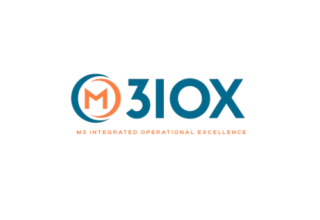AUTHOR: Shashank Srivastava – Solution Architect
1. Technology and Platform
Infor M3 (Multitenant – MT)
Platform: Infor M3 MT is a cloud-based ERP system.
Technology Stack: Built on modern, multi-tenant cloud architecture, leveraging the latest web technologies and cloud infrastructure.
Deployment: Primarily deployed in the cloud, offering Software as a Service (SaaS).
User Interface: Modern web-based interface, often utilizing Infor OS and Infor Ming.le for enhanced collaboration and user experience.
Movex (AS/400)
Platform: Originally designed for the IBM AS/400 (now IBM iSeries) platform.
Technology Stack: Uses the RPG programming language and IBM’s proprietary database and middleware.
Deployment: On-premises deployment on IBM AS/400 hardware.
User Interface: Typically features a traditional, text-based interface, although some newer versions have graphical user interfaces (GUIs).
2. Functionality and Features
Infor M3 (MT)
Functionality: Offers a wide range of functionalities covering manufacturing, distribution, equipment, and fashion industries.
Scalability: Designed to scale easily with business growth, leveraging cloud infrastructure.
Updates and Maintenance: Automatic updates and maintenance provided by Infor, reducing the burden on internal IT resources.
Integrations: Seamless integration with other Infor products and third-party applications through Infor ION.
Movex (AS/400)
Functionality: Comprehensive ERP functionalities similar to Infor M3, but tailored to the capabilities of the AS/400 platform.
Scalability: Scaling can be more challenging due to the limitations of the AS/400 hardware.
Updates and Maintenance: Requires manual updates and maintenance, typically handled by the organization’s IT department.
Integrations: Integration capabilities are more limited and often require custom development or third-party middleware.
3. User Experience
Infor M3 (MT)
User Experience: Modern and user-friendly, with a focus on intuitive navigation and enhanced usability.
Accessibility: Accessible from anywhere with an internet connection, supporting remote and mobile workforces.
Customization: Extensive customization options through a more flexible architecture and development environment.
Movex (AS/400)
User Experience: More traditional and less intuitive compared to modern systems.
Accessibility: Access is typically limited to the local network.
Customization: Customization can be more complex.
4. Cost and Licensing
Infor M3 (MT)
Cost Structure: Subscription-based pricing model, which can be more predictable and spread out over time.
Total Cost of Ownership: Generally lower total cost of ownership due to reduced infrastructure and maintenance costs.
Movex (AS/400)
Cost Structure: Typically involves upfront licensing costs and ongoing maintenance fees.
Total Cost of Ownership: Higher total cost of ownership due to hardware, maintenance, and support requirements.
5. Future Prospects
Infor M3 (MT)
Development and Support: Actively developed and supported by Infor, with regular updates and new features.
Future-Proofing: Designed to adapt to future technological advancements and business needs.
Movex (AS/400)
Development and Support: Limited active development, with most focus shifted to newer platforms like Infor M3.
Future-Proofing: Less adaptable to future technological changes due to the legacy nature of the AS/400 platform.
By understanding these differences, businesses can make informed decisions when choosing between Infor M3 and Movex (AS/400) based on their technological needs, scalability, and cost considerations.
